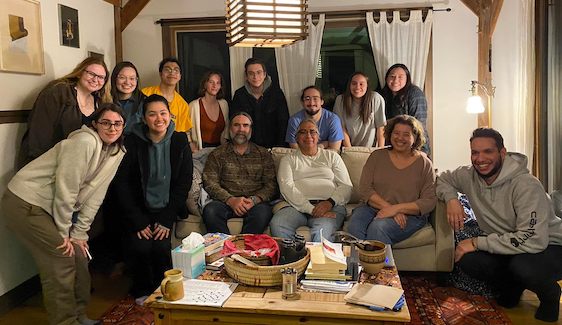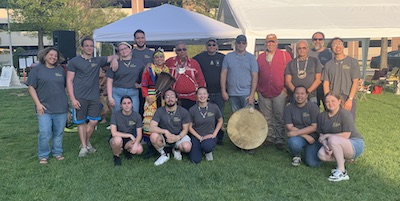George Mason University’s Native American and Indigenous Alliance (NAIA) works each semester to foster a sense of community for Mason’s Native and non-Native students. But the month of November is an especially busy time for this student organization.
That’s because November is National Native American Heritage Month (NAHM), an opportunity to honor the rich ancestry and traditions of Native Americans, past and present.

“It’s the reality for many people that they are going to be uneducated about topics like Native American history and culture because the society that we live in perpetuates stereotypes and false histories,” said Domi Hannon, NAIA’s internal president and a senior foreign languages major. “So we are being that welcoming space and allowing anyone to come here and learn about Native American people as an actual people, not just as a stereotype.”
NAIA has filled its November calendar with numerous events, such as attending the dedication of the National Native American Veterans Memorial on the grounds of the National Museum of the American Indian, and holding a beading workshop led by NAIA Secretary Mariko Nojima-Schmunk of the Red Lake Band of Chippewa Indians.
The goal is to educate people about Indigenous history but also to “celebrate Indigenous creativity” and have “moments of good times, joy, and family,” Hannon said.
At the start of their general body meeting on Nov. 3—focused on the history of NAHM—members filled their plates with squash, chicken, salad, and other filling foods they made for a dinner together. This, they said, is a tradition they do for anyone who joins their biweekly Thursday meetings.

Logan Varker, a graduate student in Mason’s Carter School for Peace and Conflict Resolution, said he wasn’t aware of NAHM prior to the meeting. Not only has NAIA been helpful with understanding indigeneity, Varker said, but also with his work in his HIST 685 Community Engaged History class taught by Associate Professor Gabrielle Tayac.
Each NAIA event starts with a reading of a land acknowledgement statement, something the group hopes becomes standardized across Mason.
“It’s important to know whose land you’re on and the history of what these Indigenous people had to go through so that these huge buildings could be built,” said Sara Jefferson, NAIA’s external president who is also a junior conflict analysis and resolution major and a member of the Chickahominy Indian Tribe of Charles City County, Virginia.
NAIA is unique, as it’s a group for both the more than 45 Indigenous students on campus this semester and also for allies, Jefferson said. “We find strength in numbers, so having these allies come together to learn and amplify our voices is important.”
To honor LGBTQ+ History Month in October, NAIA collaborated with the LGBTQ+ Resources Center and the Center for Culture, Equity, and Empowerment for a virtual conversation with Two-Spirit Elder Elton Naswood of the Near to the Water People Clan.
Naswood explained that a “two-spirit” is a person who identifies as having both a masculine and a feminine spirit, and is used by some Indigenous tribes to describe their sexual, gender and/or spiritual identity.
“Terms are validating and understanding,” Naswood said. “If we had terms in our Native communities, that means we existed.”
Learn more about NAIA’s events on Instagram at @gmunaia.
